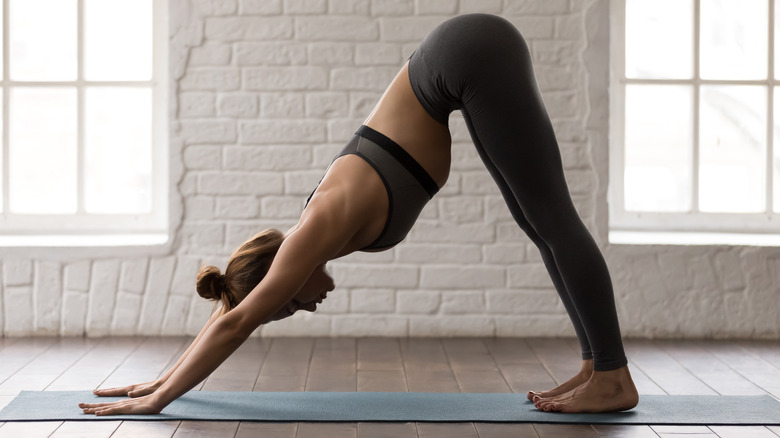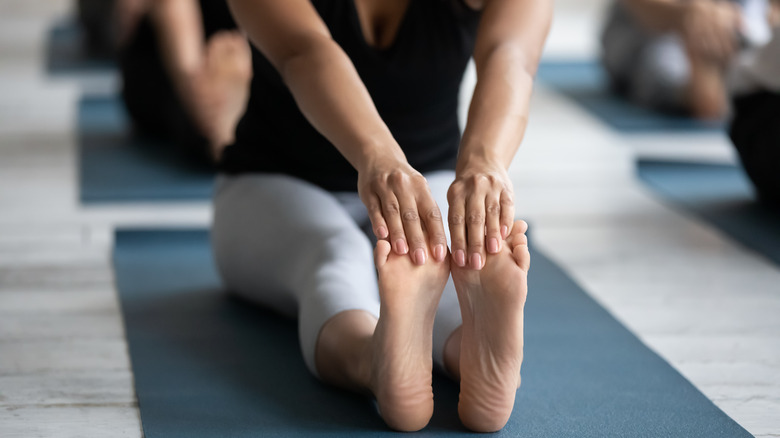Why Downward Dog Hurts Your Calves
If your calves hurt while performing downward dog, chances are you're experiencing tight muscles, according to Livestrong. Even if you weren't born with tight leg muscles, just sitting at a desk for several hours a day can make your calves tight (per Prevention). Or, if you're a runner, you probably have tight calves. For whatever reason, tight calves make yoga's most basic pose, downward dog, uncomfortable to do.
Tight calves affect the flexibility of your ankles, and they can also strain your Achilles tendon (via Livestrong). When your calves are tight, it might not be possible for your heels to touch the floor while performing the downward dog position. Some people try to compensate for this by moving their hands closer to their feet, but doing so causes what yoga instructor Koya Webb calls "spinal flexion and compression in the front of the body, leading to a rounded spine." This is not a good move — it could force your shoulders and wrists to bear most of your body weight, or you could injure your back in this way.
Don't push it
It's best not to force your heels to the floor while doing downward dog. Prevention suggests keeping them off the floor and working one calf at a time. To do this, bend one knee and touch the opposite heel to the floor to give each calf a short stretch. Livestrong recommends placing blocks under your hands during the pose, which distributes your body weight evenly between your hands and feet.
To help loosen tight calf muscles, you can use a foam roller. Another stretch that might help is a seated forward fold. With a block at the bottom of your feet, place a strap around the block while bending forward pulling the strap toward you. The good news is that with regular practice, downward dog becomes easier as your body (including your calves) becomes more flexible. Over time, the pain and tightness should improve (via Livestrong).


